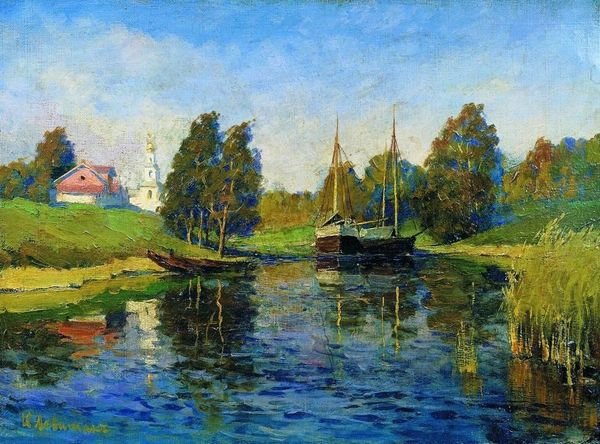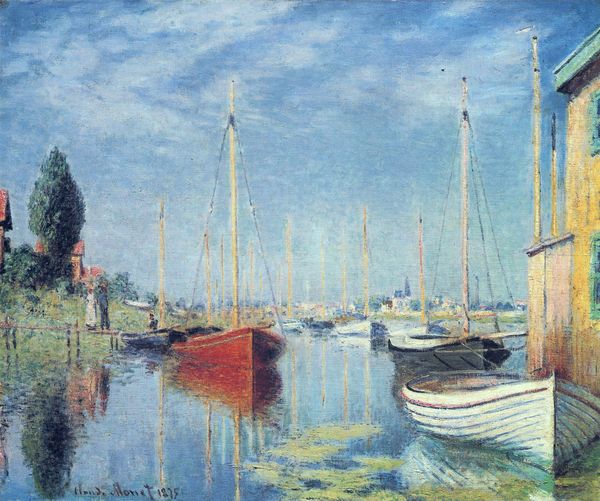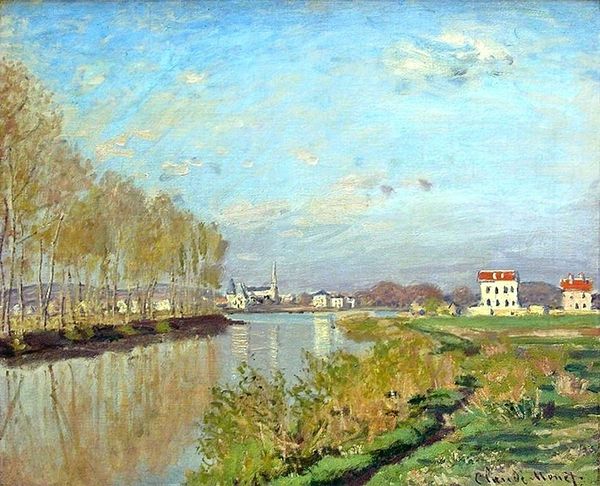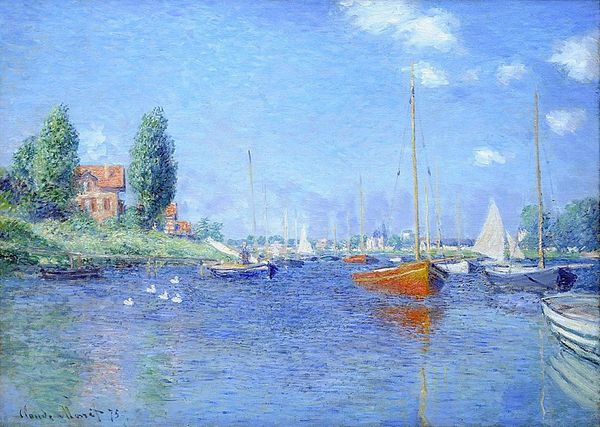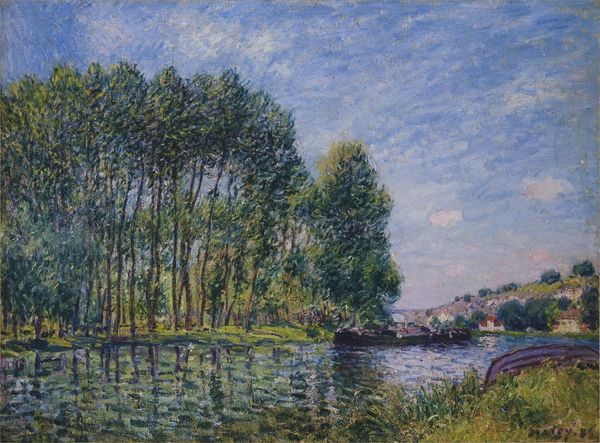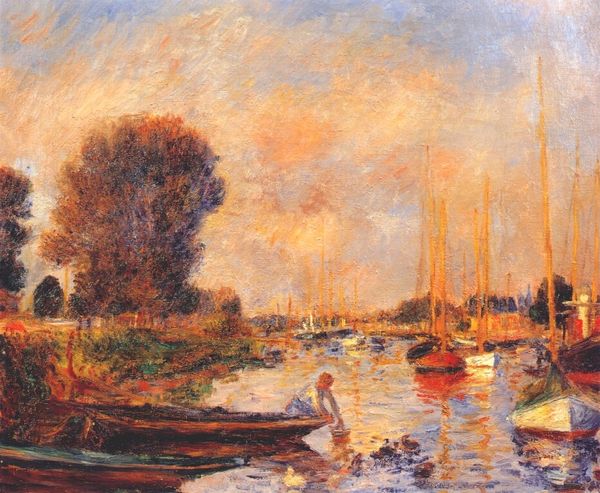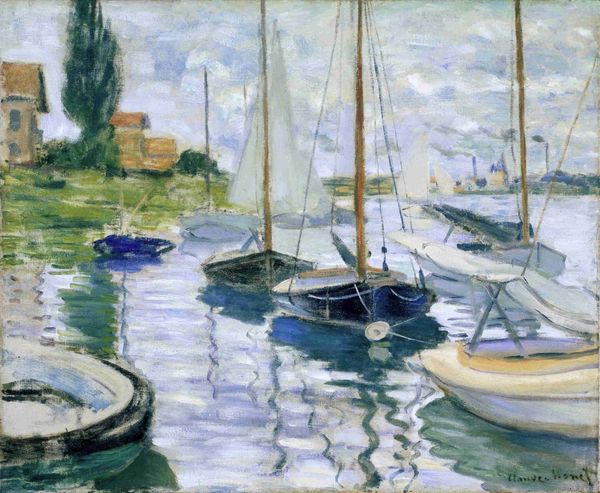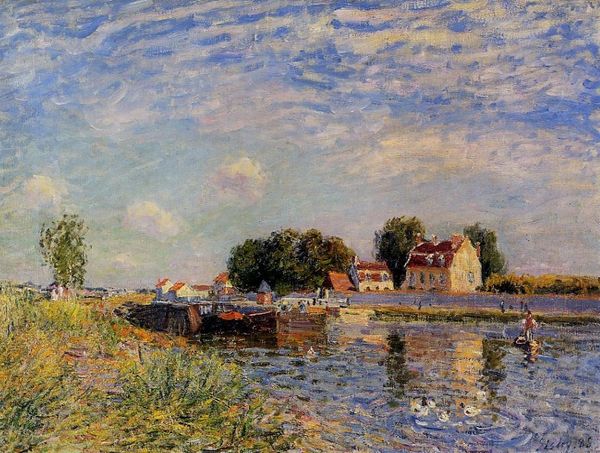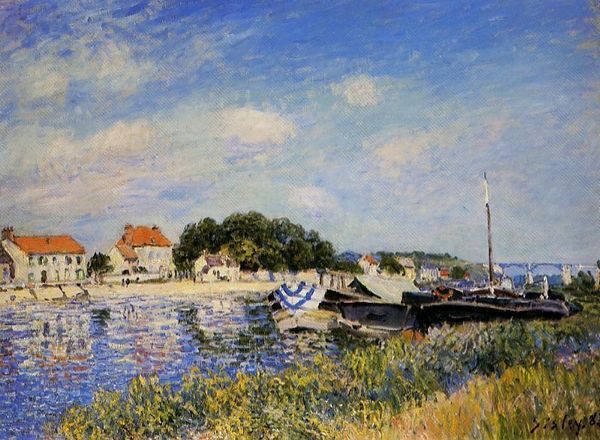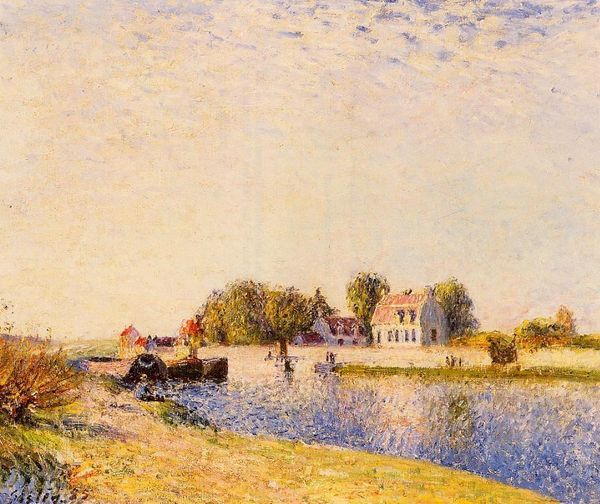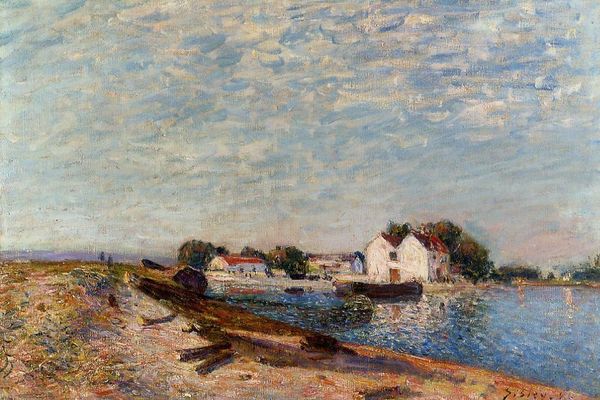
painting, plein-air, oil-paint
#
boat
#
sky
#
painting
#
impressionism
#
plein-air
#
oil-paint
#
landscape
#
river
#
impressionist landscape
#
oil painting
#
seascape
#
water
Copyright: Public domain
Editor: So here we have Claude Monet's "Argenteuil Seen from the Small Arm of the Seine," created in 1872, using oil on canvas. It really captures a still and serene scene, doesn't it? I am interested in hearing about what strikes you the most. Curator: This work really exemplifies the intersection of industrialization and leisure in the late 19th century. Argenteuil was a booming industrial suburb of Paris, and here Monet presents this rather idyllic, almost bourgeois vision of sailboats on the Seine. Editor: So, how do you see that tension playing out in the work itself? Curator: Look at the way he captures the light – broken, fleeting, almost democratic in its even distribution across the scene. This technique moved away from the highly structured salon painting that served a particular academic or political class, right? Also, consider the rising popularity of leisure boating at this time, connected with the growth of the middle class, and think about the public's access to imagery through the rise of print culture. What sort of commentary do you think Monet might be offering here? Editor: I see what you mean. It is not just a pretty scene. It also speaks about societal change at that time. I was not thinking about it at first glance. Curator: Precisely! Think of how Impressionism, as a movement, was both embraced and rejected by the establishment, making art accessible, more approachable, yet also a bit unsettling to the traditional order. Editor: That makes so much sense! So, the painting is both beautiful and part of a larger historical and social narrative. That gives me a lot to think about. Curator: Exactly. Seeing beyond the surface reveals a lot more. I hope it inspires you to think about all aspects that an art can embody.
Comments
No comments
Be the first to comment and join the conversation on the ultimate creative platform.
